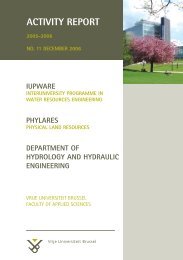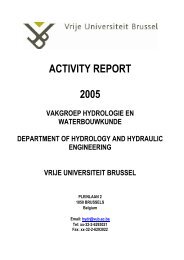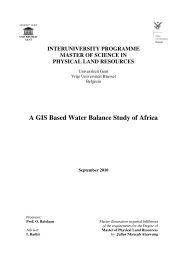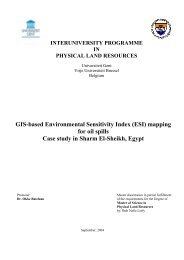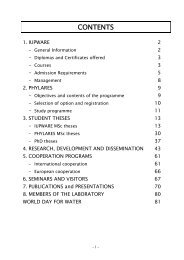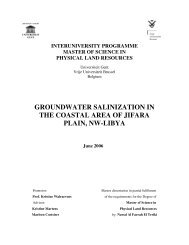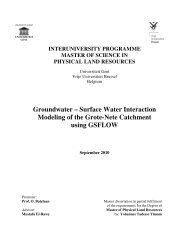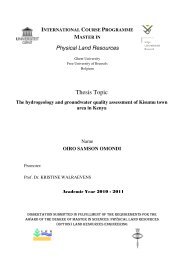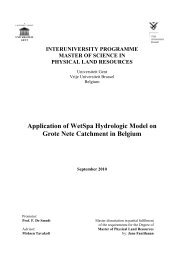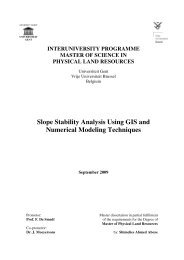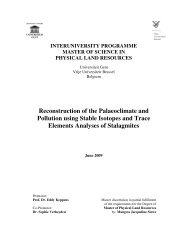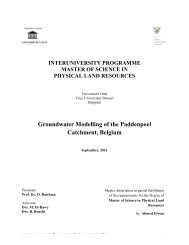Surface Water Interaction Modelling Using Visual MODFLOW and GIS
Surface Water Interaction Modelling Using Visual MODFLOW and GIS
Surface Water Interaction Modelling Using Visual MODFLOW and GIS
- No tags were found...
Create successful ePaper yourself
Turn your PDF publications into a flip-book with our unique Google optimized e-Paper software.
PHYLARES__________________________________________________________________________________________IIAbstractUnderst<strong>and</strong>ing interconnections among the components of the hydrologic cycle is fundamental todevelopment of effective water resources management <strong>and</strong> policy. The need to assess the effectsof variability in geology, climate, biota <strong>and</strong> human activities on water availability <strong>and</strong> flowrequires the development of models that couple two or more components of the hydrologic cycle.Groundwater <strong>and</strong> surface water resources are by no means disjoint, as knowing where surfacewater recharges groundwater <strong>and</strong> where groundwater flows supply surface water is an importantaspect of the hydrologic cycle. As global concerns over water resources <strong>and</strong> the environmentincrease, the importance of considering groundwater <strong>and</strong> surface water as a single resource hasbecome increasingly evident.Ground water <strong>and</strong> surface water are hydraulically interconnected, but the interactions aredifficult to observe <strong>and</strong> measure. In many situations, surface-water bodies gain water <strong>and</strong> solutesfrom ground-water systems <strong>and</strong> in others the surface-water body is a source of ground-waterrecharge <strong>and</strong> causes changes in ground-water quality. As a result, withdrawal of water fromstreams can deplete ground water or conversely, pumpage of ground water can deplete water instreams, lakes, or wetl<strong>and</strong>s. Pollution of surface water can cause degradation of ground-waterquality <strong>and</strong> conversely pollution of ground water can degrade surface water. Thus, effective l<strong>and</strong><strong>and</strong> water management requires a clear underst<strong>and</strong>ing of the linkages between ground water <strong>and</strong>surface water as it applies to any given hydrologic setting.At some reaches water moves from the l<strong>and</strong> surface to the subsurface <strong>and</strong> in other areas it movesfrom the subsurface to the l<strong>and</strong>. Lakes <strong>and</strong> wetl<strong>and</strong>s can receive groundwater inflow throughouttheir entire bed, have outflow throughout their entire bed, or have both inflow <strong>and</strong> outflow atdifferent localities. In this thesis, surface water <strong>and</strong> groundwater interaction model wasdeveloped for a study area located in the Nete Catchment, Belgium.______________________________________________________________________________________Groundwater – <strong>Surface</strong> water interaction modeling using visual <strong>MODFLOW</strong> <strong>and</strong> <strong>GIS</strong>




